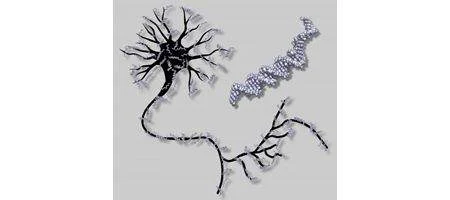Caltech researchers have created the first artificial neural network from DNA – a circuit of interacting molecules that can recall memories based on incomplete patterns, just as a brain can.

“Although brainlike behaviors within artificial biochemical systems have been hypothesized for decades,” says Lulu Qian, a Caltech senior postdoctoral scholar in bioengineering, “they appeared to be very difficult to realize.”
Consisting of four artificial neurons made from 112 distinct DNA strands, the neural network plays a mind-reading game in which it tries to identify a mystery scientist.
The researchers ‘trained’ the neural network to ‘know’ four scientists, whose identities are each represented by a specific, unique set of answers to four yes-or-no questions – whether the scientist was British, for example.
After thinking of a scientist, a human player provides an incomplete subset of answers to partially identify the scientist. The player then conveys clues to the network by dropping DNA strands that correspond to those answers into the test tube.
Communicating via fluorescent signals, the network then identifies which scientist the player has in mind. Alternatively, it can ‘say’ that it has insufficient information to pick just one of the scientists in its memory or that the clues contradict what it has remembered.
The researchers played this game with the network using 27 different ways of answering the questions (out of 81 total combinations), and it responded correctly each time.
The researchers based their biochemical neural network on a simple model of a neuron, called a linear threshold function. The model neuron receives input signals, multiplies each by a positive or negative weight, and only if the weighted sum of inputs surpass a certain threshold does the neuron fire, producing an output.
To build the DNA neural network, the researchers used a process called a strand-displacement cascade, using single and partially double-stranded DNA molecules.
While floating around in a water solution, a single strand can run into a partially double-stranded one. If their bases are complementary, the single strand will grab the double strand’s tail and bind, kicking off the other strand of the double helix. The single strand thus acts as an input while the displaced strand acts as an output, which can then interact with other molecules.
Because they can synthesize DNA strands with whatever base sequences they want, the researchers can program these interactions to behave like a network of model neurons. By tuning the concentrations of every DNA strand in the network, they can teach it to remember the unique patterns of yes-or-no answers that belong to each of the four scientists.
However, this neural network is limited, the researchers say. The human brain consists of 100 billion neurons, and creating a network with just 40 of these DNA-based neurons would be a challenge. It’s also slow – the test-tube network took eight hours to identify each mystery scientist – and the molecules are used up every time.






